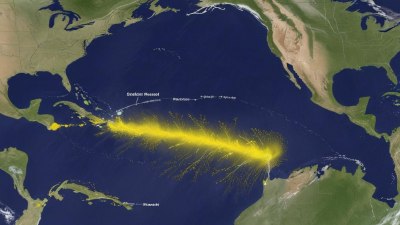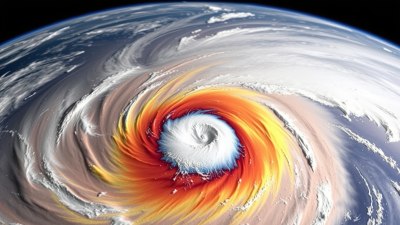What Are Atmospheric Rivers
Learn about atmospheric rivers, their impact on weather patterns, and their significance to water resources.

This image was created with the assistance of Freepik
Atmospheric rivers are narrow corridors of concentrated moisture in the atmosphere that carry water vapor from the tropics to mid-latitude regions. These phenomena can transport an immense amount of moisture, often compared to the flow of water at the mouth of the Mississippi River, and when they interact with landmasses, they can lead to significant weather events.
Understanding atmospheric rivers is crucial as they play a significant role in the global water cycle. They can be responsible for both beneficial rainfall that replenishes water supplies and devastating floods that cause widespread destruction. In this article, we will explore the science behind atmospheric rivers, their characteristics, how they form, and their impacts on the environment and society.
Characteristics of Atmospheric Rivers
Atmospheric rivers typically range from about 250 to 375 miles wide and can extend thousands of miles long. They are usually found at altitudes between 1.5 to 3 miles above sea level. These rivers of vapor transport moisture across vast distances, resulting in precipitation when they reach land, particularly when they encounter mountain ranges, which force the moisture to rise and condense into rain or snow.
One of the distinguishing features of atmospheric rivers is their ability to release large amounts of precipitation in a short period. When these systems make landfall, they can produce intense rainfall, leading to flash floods, mudslides, and other related hazards. The rainfall is often very localized, leading to situations where one area may experience heavy downpours while neighboring regions receive little to no rainfall.
Formation of Atmospheric Rivers
Atmospheric rivers form primarily due to the contrast between warm and cold air masses. Warm, moist air from tropical regions rises and travels northward while cooler air masses from the poles move southward. When these two air masses meet, the warm air rises, and as it cools, the moisture condenses into clouds and subsequently falls as precipitation.
Regions where atmospheric rivers often form include the eastern shores of the Pacific Ocean, especially in areas such as California. Here, the warm ocean water creates ideal conditions for forming these vapor transport systems. The Sierra Nevada mountains and other coastal mountain ranges can enhance precipitation from atmospheric rivers through orographic lift, leading to greater rain or snowfalls in these regions.
Impact on Weather Patterns
The impact of atmospheric rivers on weather patterns can be profound. These systems are responsible for a significant portion of the precipitation in mid-latitude regions. For example, studies suggest that atmospheric rivers contribute to about 30 to 50 percent of the annual precipitation in the western United States. Their influence extends beyond precipitation, affecting temperature, humidity, and even local wind patterns.
In the context of climate change, the intensity and frequency of atmospheric rivers may be altered, potentially leading to more extreme weather events. As the planet warms, the atmosphere can hold more moisture, which may lead to stronger atmospheric rivers capable of producing heavier rainfall.
Benefits of Atmospheric Rivers
Despite the potential hazards associated with atmospheric rivers, they are also crucial for replenishing water supplies. In many regions, especially those dominated by Mediterranean climate conditions, these systems provide essential moisture that supports agriculture, hydropower generation, and drinking water resources.
For instance, in California, atmospheric rivers contribute significantly to the Sierra Nevada snowpack, which serves as a natural reservoir for water during the dry summer months. The melting snowpack provides a consistent and vital water source that supports ecosystems, agriculture, and urban water supplies. Without these atmospheric rivers, many regions would face severe drought conditions.
Hazards Associated with Atmospheric Rivers
While atmospheric rivers can be beneficial, they also pose significant hazards. The intense precipitation associated with these phenomena can lead to flooding, erosion, and landslides. In some cases, flooding can be catastrophic, endangering lives and property. For instance, California has experienced several instances of devastating floods linked to atmospheric rivers, particularly in January 2021, when a series of atmospheric rivers caused widespread evacuations and damage.
In addition to flooding, the heavy rainfall can lead to mudslides, particularly in hilly or mountainous regions where vegetation has been lost due to wildfire or other disturbances. Road closures, disrupted transportation, and damage to infrastructure are common outcomes when atmospheric rivers bring heavy rain.
Monitoring and Predicting Atmospheric Rivers
Monitoring atmospheric rivers is essential for early warning systems and disaster preparedness. Meteorologists use satellite imagery, weather models, and ground observations to track the formation and movement of these moisture-laden systems. Advances in technology have improved the accuracy of predictions, enabling the forecasting of potential impacts on affected regions.
Understanding the behavior and characteristics of atmospheric rivers also involves the study of climate models to assess how climate change might influence their frequency, intensity, and effects. By grasping the patterns and dynamics of atmospheric rivers, scientists can better anticipate future weather events and their potential impacts on communities and ecosystems.
Atmospheric rivers are vital components of the earth's climate system. They play a two-edged role in producing essential rainfall that supports ecosystems and water supplies while also posing significant risks through extreme weather events. As our understanding of atmospheric rivers continues to grow, it becomes increasingly evident that these phenomena will remain central to discussions around water resource management, climate change adaptation, and disaster preparedness.
In summary, atmospheric rivers represent an essential theme in both weather science and climate change discourse. Ongoing research and investment in monitoring technologies will be crucial in managing risks associated with these powerful weather events while maximizing their benefits for water resources.











